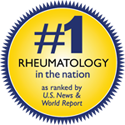Methods
The use of anti-osteoporosis medications (bisphosphonates, calcitonin, selective estrogen receptor modifiers (SERMs), and hormone replacement therapy (HRT)) and utilization of BMD testing was evaluated in all adult patients newly initiating longterm (6 months) glucocorticoid therapy of > 7.5 mg per day of prednisone (or equivalent) from a commercial database of private insurance and Medicare enrollees between 1996 and 2001. Patients with any diagnosis, except those receiving glucocorticoids for organ transplantation or malignancy, were included. Subjects were classified based on date of initiation of glucocorticoid therapy (1996-1997, 1998-1999, 2000-2001), glucocorticoid dose, non-traumatic fracture history, and specialty of provider recommending bone-health strategies.
Results
3125 patients initiating glucocorticoid therapy were included. Among the three time-period cohorts, balanced characteristics for age group, inflammatory diagnosis, and mean glucocorticoid dose were present, with the exception of the 2000-2001 period in which a higher proportion of subjects 65 years of age and older was noted.
BMD utilization in the year before or after initiation of glucocorticoid therapy was highest for women aged 50 and older, and increased over the 3 time-periods of study (from 10% to 19%; p<0.01). However, BMD utilization for men of any age and women less than 50 years of age was less than 6% and did not increase with time. Characteristics associated with a higher likelihood of having BMD measured were female sex, age greater than 50 years, history of fracture, and treatment by a rheumatologist. Patients treated a rheumatologist were 4 times more likely to have a screening BMD measurement compared to primary care providers. The likelihood of having a screening BMD measurement was not statistically higher in patients treated by pulmonologists, gastroenterologists, or other medical specialists compared to primary care providers.
Women over the age of 50 years were more likely to receive anti-osteoporosis therapy, with approximately 50% of women receiving bone protective therapy. Temporal trends for this group included a decrease in the prescription of estrogen therapy, and an increase in the use of bisphosphonates, calcitonin, and SERMs. Use of anti-osteoporosis therapy was less than 25% in women under the age of 50, and did not change with time. Use of anti-osteoporosis therapy was less than 5% for men of all ages with little change over the study interval. Characteristics associated with a higher likelihood of receiving anti-osteoporosis therapy included female sex, age greater than 65 years, higher cumulative dose of glucocorticoid, history of BMD measurement, and treatment by a rheumatologist. Patients treated by a rheumatologist were 3.5 times more likely to receive anti-osteoporosis medications compared to primary care providers. The likelihood of having receiving osteoporosis medications was not statistically higher in patients treated by pulmonologists, gastroenterologists, or other medical specialists compared to primary care providers.
Conclusions
BMD measurement and use of anti-osteoporosis medications was far lower than recommended for men and women of all ages initiating therapy with chronic glucocorticoids. Temporal improvements in the use of these measures were noted only for postmenopausal women. Though still not ideal, women over the age of 50 and those cared for by rheumatologists were the most likely to receive recommended measures.
Editorial Comment
These results highlight the abysmal rates of adequate prophylactic bone health maintenance in patients treated with glucocorticoid therapy. The causes of the discrepancy between recommendation and practice are likely multifactorial and include a lack of awareness of guidelines on the part of care providers and patients, lack of medical coverage for BMD measurements for some premenopausal women and men, a decrease in the use of hormone replacement therapy among middle aged women since the late 1990s, the accelerated pace of primary providers patient loads necessitating a decrease in attention to prophylactic measures, and other complications occurring in patients receiving chronic glucocorticoids that may overshadow bone health in the office setting. The high risk of fracture in these patients, leading to substantial morbidity, mortality, and subsequent cost, combined with the clear demonstration of benefit from prophylactic measures is evidence supporting the need for additional awareness of the importance of maintaining bone health on the part of practitioners most likely to prescribe chronic glucocorticoids.

